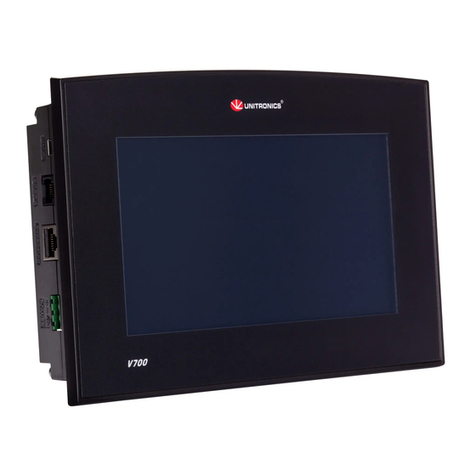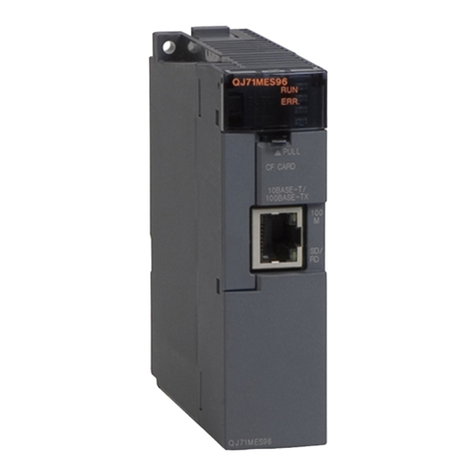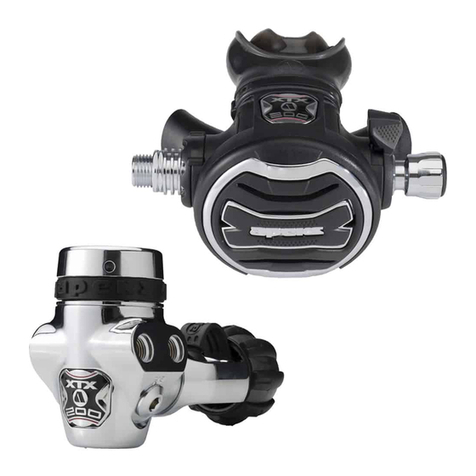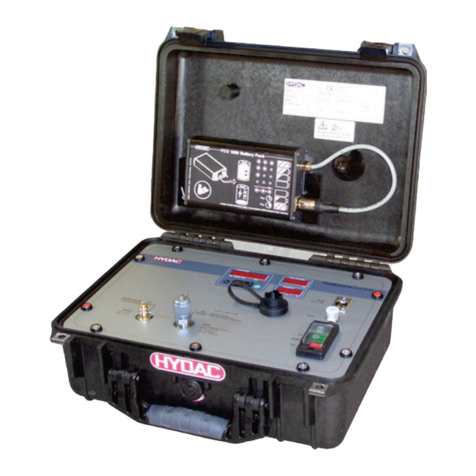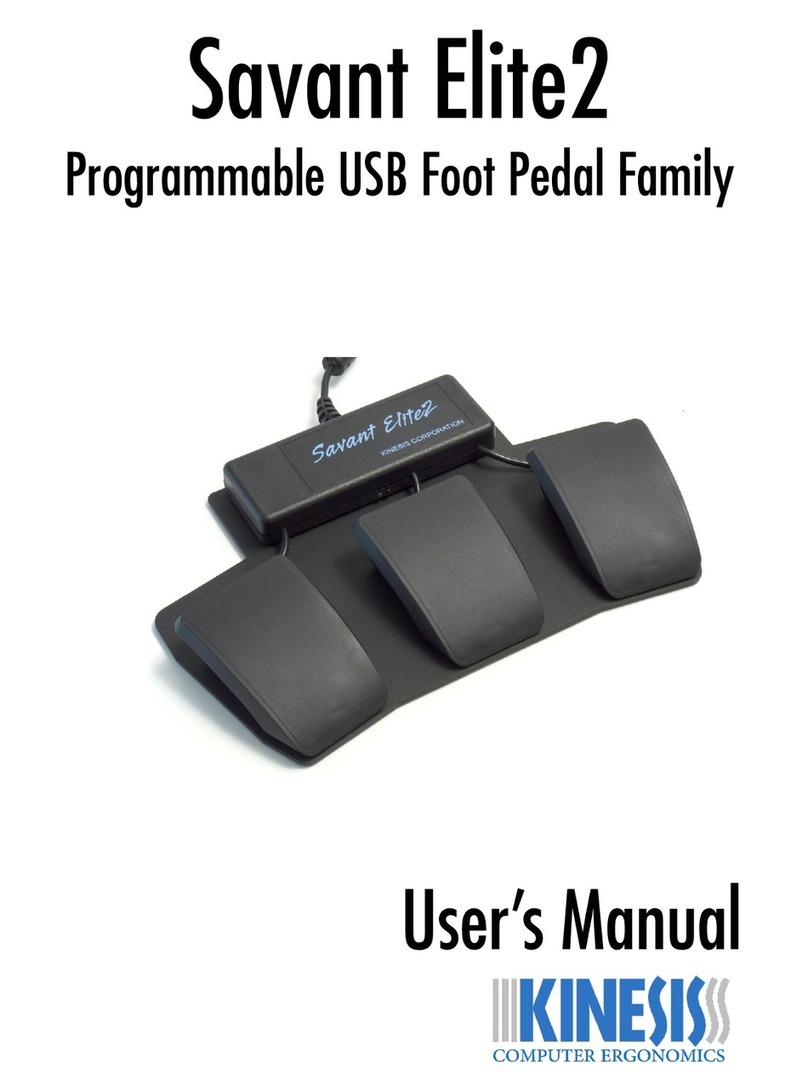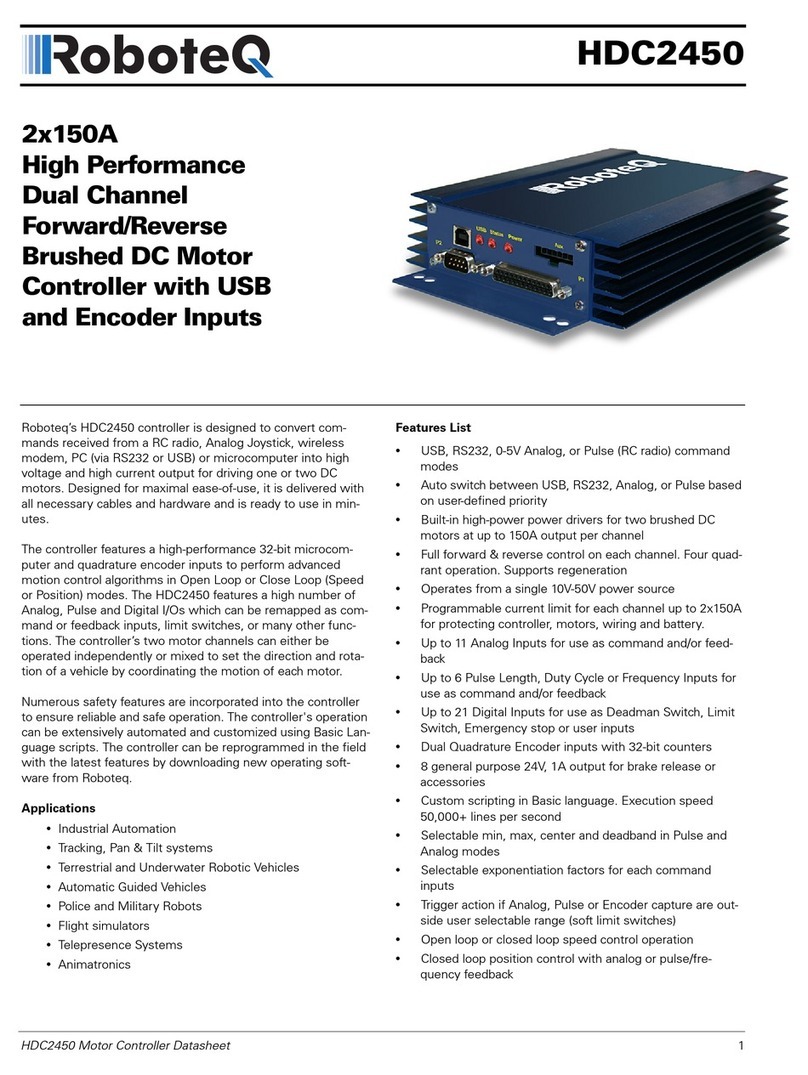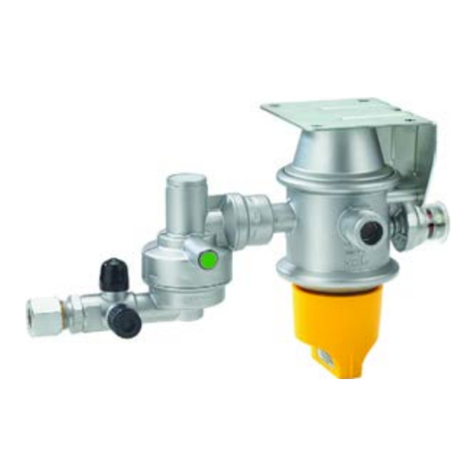Go Fermentor NET User manual

GOFERMENTOR NET OPERATING MANUAL

2
CONTENTS
1. WHAT IS THE GOFERMENTOR? .............................................................................................................................3
2. COMPONENTS .......................................................................................................................................................5
3. INSTALLATION........................................................................................................................................................6
3.1 WHAT DO YOU NEED TO PROVIDE? ....................................................................................................................6
3.2 WHAT DO YOU NEED TO ORDER FROM US? .......................................................................................................6
3.3 EQUIPMENT SETUP..............................................................................................................................................7
4. RED WINE OPERATIONS.......................................................................................................................................11
5. WHITE WINE OPERATIONS ..................................................................................................................................20
6. OPERATION OF CONTROLS ..................................................................................................................................25
6.1 USING SMARTPHONE CONTROL APP.................................................................................................................25
6.2 NET LOCAL CONTROLLER OPERATION ...............................................................................................................32
6.3 PUNCHING .........................................................................................................................................................36
6.4 PRESSING ...........................................................................................................................................................39
6.5 TEMPERATURE CONTROL ..................................................................................................................................41
6.6 GOFERMENTOR APP ADDITIONAL FEATURES....................................................................................................42
APPENDICES.................................................................................................................................................................45
A1. SPECIFICATIONS.................................................................................................................................................46
A2. NET CONTROL PANEL ASSEMBLY INSTRUCTIONS .............................................................................................50
A3. TROUBLESHOOTING ALARMS AND ERRORS......................................................................................................51
A4. OPERATION WITHOUT INTERNET ACCESS.........................................................................................................52
A5. NET CONTROLLER CONFIGURATION .................................................................................................................53
A6. GOCOOLER ASSEMBLY INSTRUCTIONS..............................................................................................................56
A7. ETHANOL ESTIMATOR (OPTIONAL) ...................................................................................................................58
A8. WARRANTY, LIABILITY, AND RETURNS POLICY..................................................................................................62
A9. TERMS AND CONDITIONS OF SALE....................................................................................................................63

3
1. WHAT IS THE GOFERMENTOR?
Introducing the first truly revolutionary device for winemaking. Traditional winemaking fermentors have changed
little in the last 500 years - the only major change being the move from open wood vats to temperature controlled
stainless-steel tanks. The GOfermentor brings 21st century technology, developed originally for the manufacture
of pharmaceuticals, to modern winemaking. This technology dramatically reduces the capital and operating cost
for a winery. No significant installation is necessary: a fermentation system can be set up within minutes in any
room. No cleaning is required which dramatically reduces labor requirements. No waste water treatment is
needed as the process uses essentially no wash water. And, finally, the GOfermentor provides better control of
fermentation parameters, minimal exposure to air, and automated cap management, thereby reliably producing a
better quality wine.
The GOfermentor currently available has a nominal volume of 1000 liters. This can be used for a batch size ranging
from 200lbs to 1 ton of grapes per run. This makes it ideal for small winery operations, and also for experimental
runs in large wineries. It can be used for either red or white wine production. In the case of red wine, the built-in
punch system manages the cap, and is also used at completion of fermentation to press out the wine. With white
wine, the punch system is used to press out the grape juice prior to fermentation and can later also be used for
bâtonage (stirring up the settled yeast).
The GOfermentor provides a more controlled environment than fermentation in an open bin. The single-use
fermentation liner is delivered clean, and the fermentation is performed entirely inside this sealed environment.
This minimizes potential contamination. Even punch-down of the cap is done without exposing the fermenting
must to air. The built-in punch system can operate automatically and it ensures that the cap remains moist while
maximum flavor and color is extracted under control of the winemaker. The punch system is coupled with a
strainer assembly to function as a very effective bladder press, eliminating the need for a dedicated press in the
winery.
Optional accessories allow the monitoring and control of temperature. This enables each fermentation to be
conducted at its optimal temperature.
The GOfermentor eliminates the high capital and installation cost of conventional stainless steel fermentation
tanks. Minimal capital and operating labor costs are obvious advantages over the traditional fixed stainless-steel
tanks. However, often overlooked is the cost and environment impact of washing. Conventional fermentation
tanks must be thoroughly washed before and after use. This requires the use of polluting detergents, physical
scrubbing, and lots and lots of rinse water. It is estimate that rinse water typically accounts for 3-7X the tank
volume. Washing a 300 gallon fermentation tank wastes 900 to 2100 gallons of fresh water. With the
GOfermentor, there is no wash water usage. The reusable outer container does not contact the must so a simple
wipe down is sufficient. The fermentation liner is delivered empty, clean, and folded. These liners are made of USP
grade biodegradable plastics which are free from plasticizers/leachables and are certified for use in pharmaceutical
operations. There is no need to rinse or clean this liner before use. After the wine is pressed out at the end of the
fermentation the liner contains the residual pomace. The entire liner can be taken to the vineyard and the pomace
dumped back as a natural fertilizer for the vines as it is not contaminated with any detergents. The empty used
liner can simply be sent to municipal landfill where it quickly biodegrades. The used liner does not contain any
hazardous or toxic chemicals.

4
BENEFITS
The GOfermentor provides many benefits to the winery:
1. A clean and closed environment for the fermentation. No open operations result in minimal oxidation.
This also can reduce the need to add sulfites. No “reductive” aromas.
2. Minimal capital expenditures.
3. Single-use design eliminates cleaning with a huge reduction in water consumption.
4. Integral automated punch ensures proper cap management with excellent flavor and color extraction.
5. Integral press design eliminates the need for labor intensive pressing and cleaning. Pressing can be done
without any air contact. Eliminates the need for a costly press and water usage to clean it.
6. Portable clean operation. Grapes can be destemmed and crushed at the vineyard and pumped into the
GOfermentor. Truck the filled GOfermentor to the winery and start the fermentation. All the mess and
cleaning is confined to just the vineyard.
7. Urban microwineries – the GOfermentor makes the urban microwinery possible. It is portable, compact,
needs no water or utilities, minimal staff needed. 4’x4’ space and 120 volts household power receptacle.

5
2. COMPONENTS
The GOfermentor consists of two major components:
1. GOBASE - Reusable outer container with control panel – This rigid plastic container holds the
fermentation liner in position. The container can be moved by pallet jack or forklift. It is also DOT certified
for truck shipment. Since the wine does not contact the outer container, it can be reused between
batches by simply wiping down the surfaces. The container also folds down for storage when not in use. A
panel with electrical components, inflation pump, and valves attaches to the rigid container for automatic
control of punch, temperature, and other functions.
2. GOLINER - Single-Use Fermentation Liner – The fermentation is conducted entirely inside a flexible plastic
liner. This liner has 2 chambers – a primary chamber where the fermenting must, or juice, is contained,
and a secondary chamber that is used solely for inflation. The two chambers share a common wall,
however it is important to note that the air used to inflate the second chamber does in no way come in
contact with the fermenting must in the primary chamber. The GOLINER is supplied clean and ready for
use. It is intended for only one use.

6
3. INSTALLATION
The GOfermentor is designed to be portable. There is essentially no installation other than placing the unit in
position and connecting to a standard electrical outlet.
3.1 WHAT DO YOU NEED TO PROVIDE?
•Floor space 48x48inches by 60inches height. Minimum doorway width 46 inches.
•Pallet jack or truck to move 200 lb (90Kg) GOBASE unit.
•Standard household-type electric service 110 VAC 5amp. Optional 220 VAC.
•Chilled water or glycol supply if using optional GOCOOLER heat exchanger plate.
.
3.2 WHAT DO YOU NEED TO ORDER FROM US?
REQUIRED
•GOFERMENTOR NET
•GOBASE outer container
•GOLINER single-use dual chamber fermentation liners. Need one per batch. Sold in packs of 3.
OPTIONAL
•GOTEMP sample tube/temperature probe for temperature measurement and sampling (recommended).
•GOCOOLER heat exchanger plate for temperature control (requires GOTEMP and recirculating coolant).

7
3.3 EQUIPMENT SETUP
Setting up the GOfermentor for winemaking is easy and should take less than 15 minutes. First set up the rigid
GOBASE unit. Then install the single-use GOLINER.
GOBASE
1. Set the rigid GOBASE in a suitable area. Open the folded sides and push them until they lock in place.
2. Check that there is no debris inside the GOBASE that might damage the GOLINER.
3. Assemble the support rail and hose support pole to the control panel (Appendix A2). Using the support
rail hang the control panel on the front right of the GOBASE. The front of the GOBASE is the side with
the drop down door. Just place the support rail over the lip of the GOBASE and let the control panel hang
against the front of the GOBASE.
OPTIONAL GOCOOLER HEAT EXCHANGER PLATE
For temperature control, the optional GOCOOLER heat exchanger plate is necessary. It also requires the GOTEMP
sampler/temperature probe.
1. Assemble the coolant pipes to the heat exchanger plate (Appendix A6).
2. Place the GOCOOLER on the bottom of the GOBASE with the vertical coolant lines towards the back. The
back side is the side opposite the drop-down door. If you need additional cooling, you can place two
cooling plates in the GOBASE (Appendix A6). The GOLINER will be placed direct on top of the heat
exchanger plate. DO NOT PLACE THE GOCOOLER OVER THE DRAIN OPENING.
3. Connect a coolant inlet hose (user-supplied) to the control valve (1/2” NPT) and the coolant return hose
(also user-supplied) to the outlet fitting (½” NPT).
GOLINER
1. Remove the GOLINER carefully from its packaging. Remove and discard any packing materials.
2. Place the GOLINER inside the GOBASE. The GOLINER has 4 ports (see Page 5):
a. TOP FILL PORT: This port is used to fill the liner, to make additions and to sample the GOLINER. It
should face up and be positioned towards the front.
b. TOP VENT PORT: This port is located near the top center of the liner and is used to vent gas out
of the liner.
c. BOTTOM DRAIN PORT: This port has a built-in valve and locking collar. It will be installed in the
bottom drain fitting on the front of the GOBASE.
d. INFLATION PORT: This port is used to inflate the secondary chamber of the GOLINER. It is located
in the blue section of the GOLINER and marked AIR ONLY. It should face towards the rear.

8
3. Reach inside the GOBASE bottom discharge opening and pull the BOTTOM DRAIN PORT towards you. Pull
until the tabs on either side of the BOTTOM DRAIN PORT lock into the corresponding ribs on the GOBASE
as shown below.
4. Use the supplied PIVOT STRAP to support the inflation port. Wrap the blue inflation port a few times with
the strap and anchor it through the middle leg of the GOBASE as shown in the figure below. Use the grip
to secure the strap. The length of the strap from the GOBASE lip to the blue port should be about 3 feet.
Note: During punching operations the slack may not be taken up completely but the PIVOT STRAP is
essential during pressing to hold the air chamber vertical and in position.
Make sure tabs are locked into the grooves on
both sides!
The discharge port is not typically used in
GOfermentor operation. It is used to lock the
GOLINER into the base so it does not pull out
during punching.
BOTTOM port – note the green cap has been removed to better show the locking tabs
DO NOT remove the tamperproof flange and
green cap
Double loop and/or knot
PIVOT STRAP around
blue inflation port to
prevent from slipping off
Loop around middle
leg and adjust length
using grip clamp

9
5. Connect the VENT VALVE on to the VENT port using the supplied TriClamp and gasket. The VENT port is
the middle port (located between the sampling port and the blue inflation port).
6. Use the supplied suspension cord to hang the VENT VALVE from the support pole located on the left side
of the GOFERMENTOR control panel. The keeps the VENT assembly from falling into the GOBASE. Adjust
the cord so that VENT assembly is above the lip of the outer container.
7. Plug the cable on VENT VALVE into the jack labeled VENT, located next to the power entry cable.
VENT ASSEMBLY
DROP DOWN DOOR
TO OPEN:
Lift up on the two
recessed hand holes.
Pull door up and
then fold towards
front.
TO CLOSE:
Lift folded door to
vertical. Then push
down firmly to lock.
14 – 18”

10
8. Connect the INFLATION port to the fitting on the right side of the control panel using the supplied
INFLATION HOSE. The TriClamp end connects to the liner and the quick-connect end connects to the
control panel.
9. Power up the control panel. Once the MAIN CONTROL window is displayed press the PUNCH button and
verify that the VENT valve opens. You will hear a click and you can see the valve open about ½” through
the clear VENT valve assembly. Press the flashing CANCEL button and verify that the valve closes. The
VENT assembly is actuated electrically during PUNCH operations. It also has a spring-loaded pressure
relief valve that automatically vents if the GOLINER pressurizes beyond safety limits.
10. Now repeat initiating the PUNCH operation but now allow the inflation chamber to inflate. This pulls the
inflation chamber into the correct position. You can cancel the PUNCH after the inflation chamber
appears to be fully inflated.
PERFORMING A PUNCH WITH THE EMPTY LINER IS CRITICAL AS THIS OPERATION PULLS THE INFLATION
LINER OUT FROM UNDERNEATH THE FERMENTATION CHAMBER. THIS ENSURES THAT AN EFFICIENT PUNCH
CAN BE PERFORMED WHEN THE LINER IS FULL OF MUST. OTHERWISE PORTIONS OF THE INFLATION LINER
CAN BE TRAPPED UNDER THE FERMENTATION CHAMBER AS IT IS FILLED. THIS PREVENTS THE INFLATION
LINER FROM PUSHING COMPLETELY AGAINST THE MUST AND CAN CAUSE INCONSISTENT PUNCHING.
NOTE: NO AIR WILL BE INTRODUCED INTO THE FERMENTATION LINER.
You have now completed the GOLINER installation. The next operations are different depending if you are
making red wine or white wine.
FIRST TIME SETUP – if you are setting up the GOfermentor for the first time you need to connect the
controller to the internet using WiFi. See SECTION 6 for instructions. If you do not have internet
access then refer to Appendix 4 to disable internet functionality.

11
4. RED WINE OPERATIONS
Ensure the GOfermentor is setup as described earlier in Section 3.3.
FILLING WITH MUST
1. Connect the destemmer outlet with a 2 inch TriClamp hose to the FILL port (closest to front).
2. Run the destemmer/crusher and use its internal pump or external must pump to transfer the required
amount of crushed grapes into the GOLINER (max 1 ton). Some must pumps introduce air. It is best to
remove the VENT valve assembly to allow air to flow unrestricted from the vent port. Reattach when
filling is complete.
3. Disconnect the fill hose. If you are using the optional GOTEMP sampler/temperature probe insert this into
CONNECT THE INFLATION HOSE
1. Connect the inflation hose to the camlock adaptor on the INFLATION port (located on the BLUE chamber).
Connect the other end of the INFLATION hose to the blower outlet located on the right side of the control
panel.
VERY IMPORTANT

12
ALTERNATIVE FILLING METHOD
1. In the event a must pump is not available, or any other reason the 2 inch TriClamp opening can’t be used,
an opening can be cut into the top of the GOLINER. Use of whole clusters not recommended.
2. Placement of the cut is crucial and should be made inside the triangle formed by seams between the vent
port and the inflation chamber, making sure not to cut into any of the welded seams of the liner. We
recommend a cut no longer than 24 inches
TOP VIEW
3. Apply tape along the length of the cut on both sides and fold over the edges. This will help hold the cut
open and also help during closing the liner after filling.
Cut here
seams
FILL port
VENT port

13
4. Once finished filling, the cut is easily closed with tape. Ensure surface is clean and dry before applying
tape. First apply a few small strips perpendicularly along the cut to “stitch” it together and to align the 2
sides. Then apply a few more long strips parallel to the cut to seal it closed.
You can use duct tape but special food-grade tape is available – please contact tech@GOfermentor.com
DO NOT ATTEMPT to fill the liner with crushed grapes from the BOTTOM DRAIN port. This is impossible.
MUST ADJUSTMENT
1. Samples of the must may be taken from the top FILL port and any additions can be made by opening the
TriClamp cap cover or by removing the GOTEMP sampling/temperature probe.
2. Inoculation with yeast is also done through the FILL port.
INITIAL OXYGENATION
1. Usually sufficient oxygen is introduced during the fill, but additional oxygen can be added to the must in
order to get vigorous yeast growth after pitching.
2. This can be done by connecting a tube (with connection adapter) to the sampler fitting and blowing air
into the fermentor. In this manner, the air is introduced near the bottom ensuring efficient oxygenation.
New users always ask why the GOfermentor does not produce “reductive” aromas. The
thought is that because it is closed system it should be a “reductive environment” and result in
stinky odors. The traditional method to avoid “reductive” aromas is to add oxygen. Actually,
“reductive” aromas are the result of yeast stress, and caused by high temperatures or nutrient
limitations. The GOfermentor never produces “reductive” aromas because the unique
punching action moves the must around continuously, reducing temperature gradients and
resuspending settled yeast. There is usually no need to add air after the initial yeast pitching.

14
TEMPERATURE PROBE/SAMPLING TUBE
1. Place a TriClamp gasket and slide the GOTEMP sampler/temperature probe down through the FILL port
into the GOLINER.
2. Use the supplied TriClamp to secure the sampler/temperature probe.
3. Plug the temperature probe cable into the jack located on the front panel.
4. Power up the control panel and verify that temperature is displayed.
CLEANING THE SAMPLING TUBE
At the end of fermentation, it is necessary to clean the sampling tube.
1. Unscrew the metal tip of the sampler and wash it with a brush. Take care not to damage the white
temperature probe.
2. Detach the coupling tube from the HAND SAMPLER and insert it into the female quick coupling on the
GOfermentor sampling tube. This opens the flow path. Now force hot water through the coupling tube to
flush out the sampling tube.
3. Detach the coupling tube and reassemble the metal tip.

15
SAMPLING USING HAND SAMPLER
Sampling is performed by connecting the hand sampler. Connect the coupling tube to the sampler. Push the
quick-connect coupler on the coupling tube onto the mating socket on the sampling tube. This will open the
flow path to the collection bottle. Now pump the handle to draw the sample into the collection bottle.
Disconnect the sampler by pressing the release button on the mating socket. Remove the sampler. Unscrew
the bottle to pour out the sample.
CLEANING THE SAMPLER
Dip the coupling tube on the sampler into a container of water and pump to flush the flow path into the collection
bottle. Remove and rinse the collection bottle. Reattach the bottle for next use.
NOTE: Do not operate the hand sampler without liquid. Hand pumping in air will cause the overflow valve in the
sampler to bind up. This can also happen if there is water in the mechanism. You will then need to remove the
sample bottle and free the valve as shown below:
Pump handle to fill
collection bottle
Connect to
open sample
path
Sample fills
collection tube
Coupling tube
Hand Sampler
The valve is in this cage. If it is
stuck up then the sampler will
not pump. Shake it so it moves
freely up and down and stays in
the down position.

16
PUNCH OPERATION
Punch of the cap may be initiated at any time in the fermentation. It can also be performed after initial must
adjustment to mix nutrient additions if desired.
The punch operation can be initiated manually or on a scheduled basis. For manual operation select the PUNCH
operation using the OPER button. PUNCH should be displayed over the OPER button.
1. The status box on the panel should show READY indicating that the unit is ready for punching. Press the
START button to manually initiate the punch cycle.
2. The START button will change to CANCEL indicating that a punch is now in progress. You can press the
CANCEL button at any time to instantly cancel the punch.
3. The PUNCH sequence will first open the VENT valve to deflate the fermentation chamber to the
atmosphere. After a few minutes the blower will come on and the secondary chamber will inflate pushing
on the fermentation chamber upwards. This in turn forces the liquid and cap in the fermentation chamber
up and also pushes the gas out. At a preset pressure, the blower will turn off and the secondary chamber
will deflate. After 10 seconds or so the blower will come on again and this cycle will repeat for the preset
punch time (typically 2 minutes).
4. The system will then reset, and the VENT valve will close and the fermentation chamber will slowly
reinflate with the CO2 generated by the fermentation. Excess pressure will automatically be vented
through the spring-loaded pressure relief in the VENT assembly. This ensures that the GOLINER cannot
overinflate beyond safety limits (nominal 0.7psig).
The controller enables the punch to be done automatically on a user-set schedule. Timing and duration of the
punch cycle can also be adjusted. Punch cycles are recorded on the event log.

17
NOTE: You may need to adjust the PUNCH pressure setpoint depending on the must volume (SETUP). For small
volumes 15” H2O is good, while for a large volume (> 600Kg) you should use a higher pressure (20” H2O) to get
an effective punch.
IMPORTANT: To get an effective punch all the gas in the headspace should be forced out of the fermentation
liner chamber. Increase the vent duration as necessary to ensure that all the gas is vented out. If gas is left in the
headspace the liquid will not be punched properly.
TEMPERATURE MONITORING
Temperature is monitored continuously by a probe positioned in the center and about 8 inches from the bottom
and can be displayed in either degrees C or F. The controller also has the ability to control temperature by
regulating flow of coolant through the optional GOCOOLER heat exchanger plate.
Coolant flow in
flow out
GOcooler
Control
valve
GOcooler
Wire to control panel

18
PRESSING OUT THE WINE
The GOfermentor built-in press system can be used to gently press out the wine. Use of the feature eliminates the
need for an external press and performs the pressing operation without any damaging exposure to air. It is
recommended the punching be discontinued several days prior to the anticipated pressing. At this late stage in the
fermentation most of the desired components and color should have already been extracted from the cap and
further punching is not useful. More importantly, discontinuing punching allows the cap to flocculate upwards and
clear wine collect below it. This increases the free-run and makes pressing faster.
1. When ready for press, remove the TEMPERATURE PROBE/SAMPLING tube from the liner.
2. Insert the supplied PRESS tube into this port and secure with a TriClamp.
3. Remove the VENT valve assembly and close with 2” TriClamp gasket, cap, and clamp.
4. CHECK that PIVOT strap is secure and correct length (4’ from GOBASE upper lip).
5. Connect the TriClamp outlet port on the PRESS tube to a wine transfer pump. Use a crush-proof
reinforced hose rated for vacuum.
6. The pressing tube will retain most of the seeds and skins, so an inexpensive self-priming flexible
impeller pump, or pneumatic diaphragm pump are good choices. Place a strainer inline to protect the
pump from any debris that may go through the press tube.
The configuration should look as follows:
7. Start the wine transfer pump to transfer the free-run wine. At first, the pump will simply remove the
head space gas and you should see the headspace collapsing. If you do not observe the headspace
being removed, there is an air leak into the headspace or the pump is insufficient. You must resolve
this otherwise the pressing operation is not possible. The wine will start to flow once all the gas is
removed. Avoid pumping too fast as this will draw in the cap.
8. Once the free run flow stops you can start to press out the residual liquid in the pomace. For this,
initiate the PRESS operation to squeeze the cap gently to press out the wine. The PRESS operation is
run several times with a hold period between each press+hold cycle to maximize the yield. The whole

19
process is automatic. You set the number of cycles (typically 3), hit the PRESS button, and walk away.
Pressing takes about 90 minutes (3 cycles).
9. When pressing is complete, disconnect and remove the pressing tube. Remove all fittings in
preparation for lifting out the liner.
NOTE: It is useful to have a variable speed reversible pump. Sometimes the pressing can clog due to
buildup of pomace. A few seconds of reverse flow can clear this blockage and then normal press
can be resumed.
DISPOSAL
At the end of pressing a tight mass of skins and seeds will remain in the GOLINER. Remove all fittings and twist the
top of the liner. Use a lifting strap to form a lift point as shown below:
Using a suitable device, lift the GOLINER out of the GOBASE using a lifting strap. A manual automotive engine lift is
an economical choice if a winch or forklift is not available. The GOLINER may be taken to the vineyard and slit open
to disperse the pomace as fertilizer. The empty GOLINER is then simply folded up and discarded as household
waste. There are no toxic chemicals in the used GOLINER and it will biodegrade in a landfill. The GOBASE never
contacts the must so it can simply be wiped down and setup with a new GOLINER for the next fermentation.
Release locking tabs to remove liner
Table of contents
Popular Controllers manuals by other brands
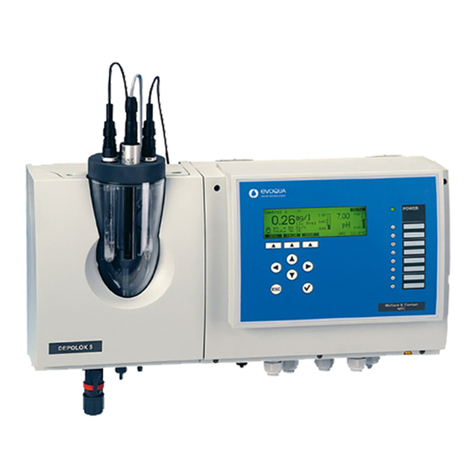
Evoqua
Evoqua WALLACE & TIERNAN MFC instruction manual
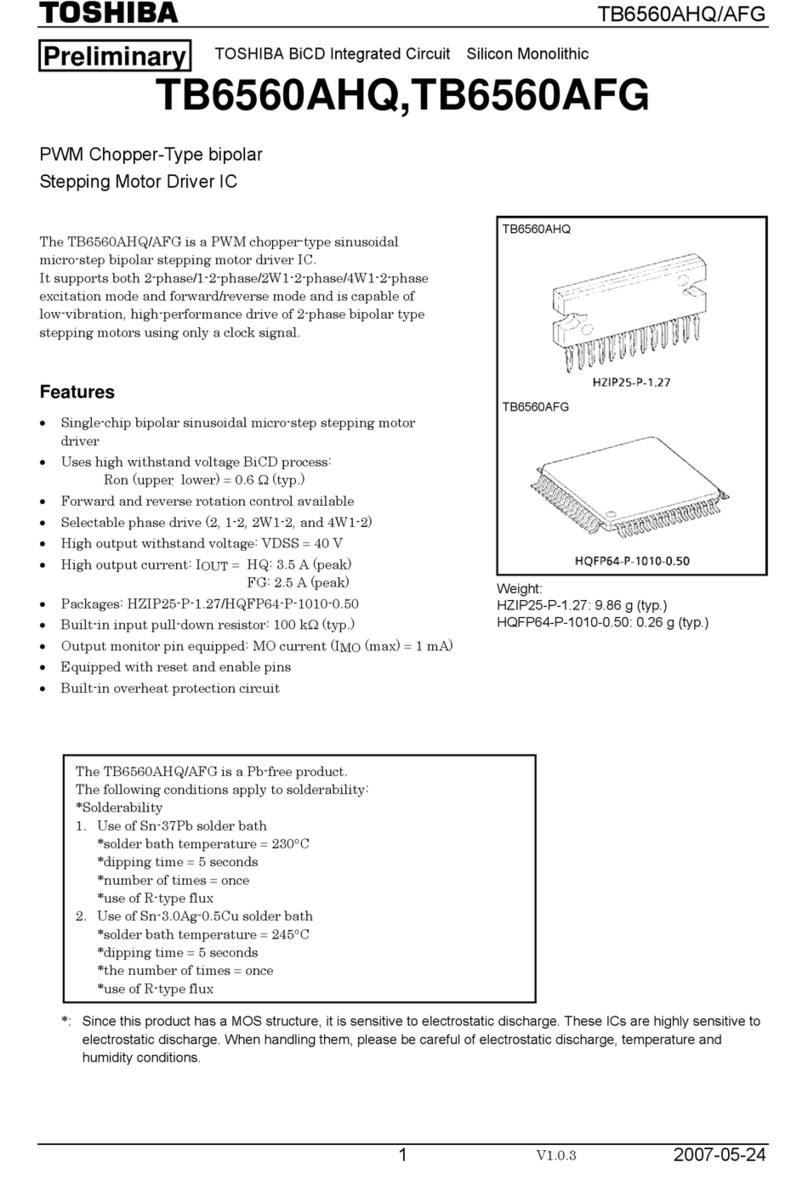
Toshiba
Toshiba Preliminary TB6560AHQ quick start guide
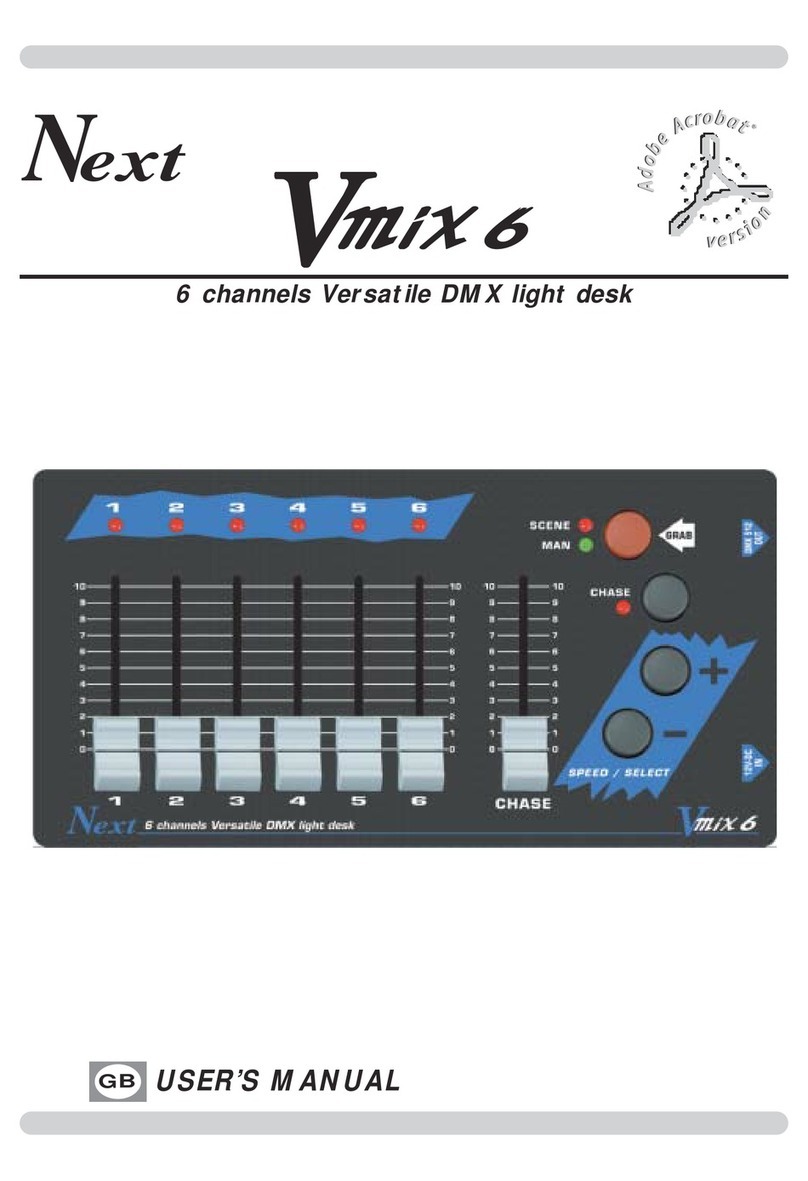
Codem Music
Codem Music Next V-MIX 6 user manual
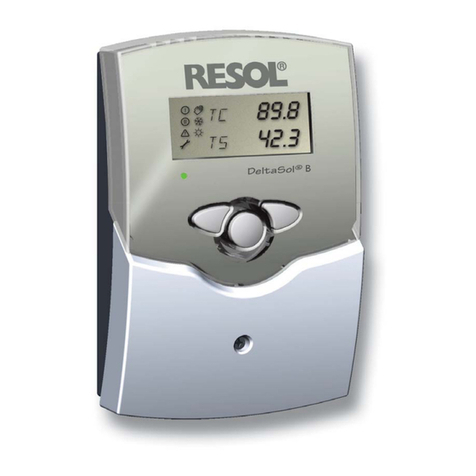
Resol
Resol DeltaSol B Mounting, Connection, Operation, Examples
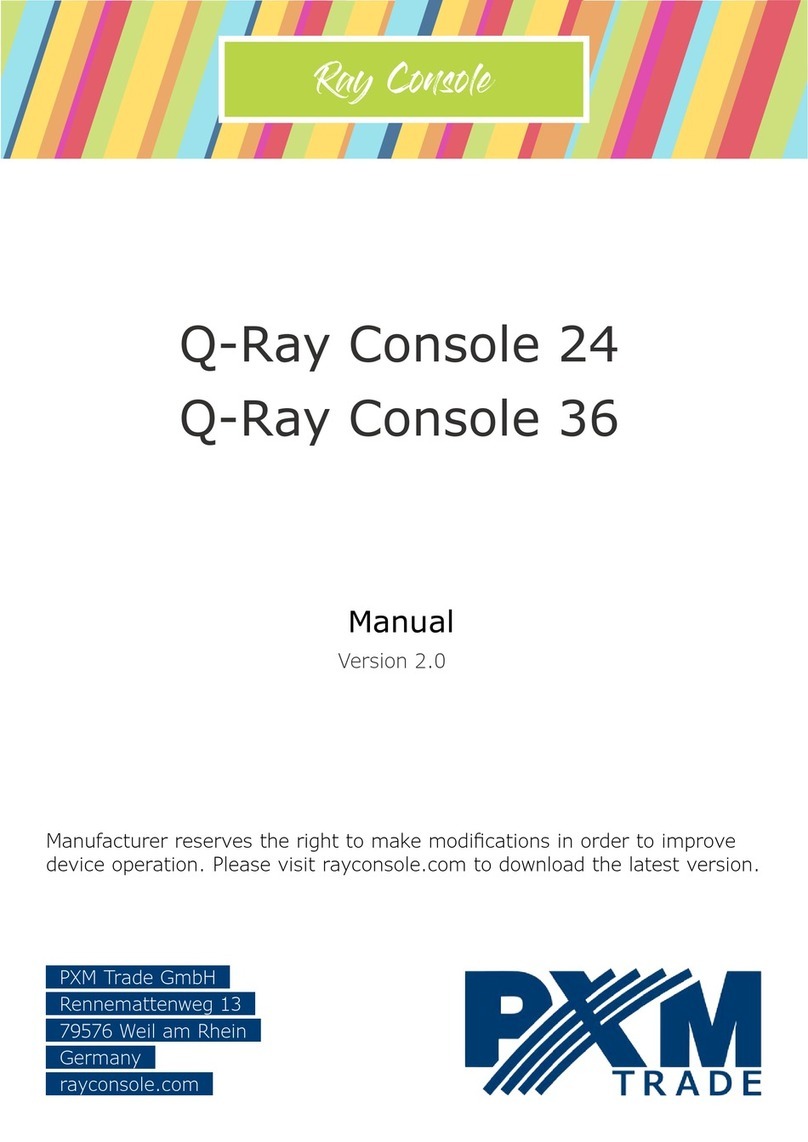
PXM
PXM Q-Ray Console 24 manual
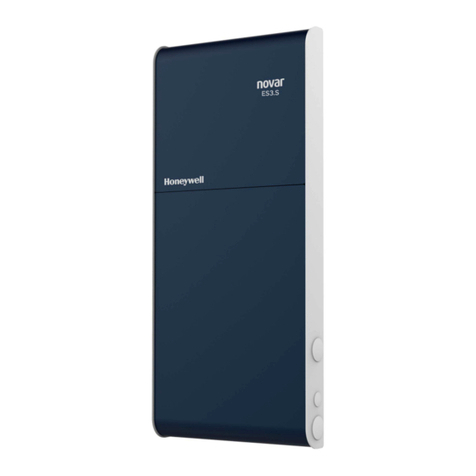
Honeywell
Honeywell Novar ES3.S Mounting and wiring instructions

